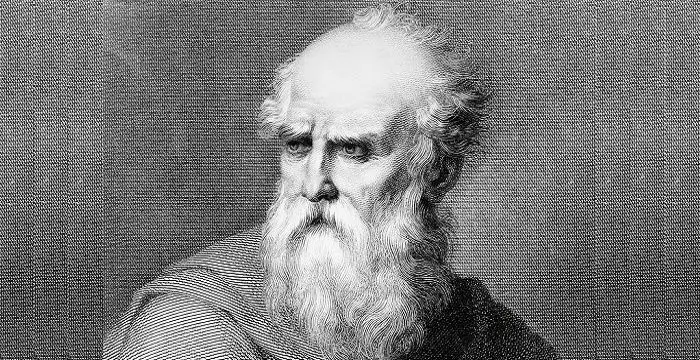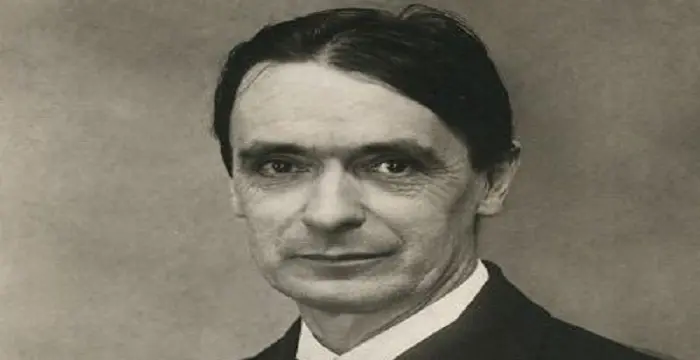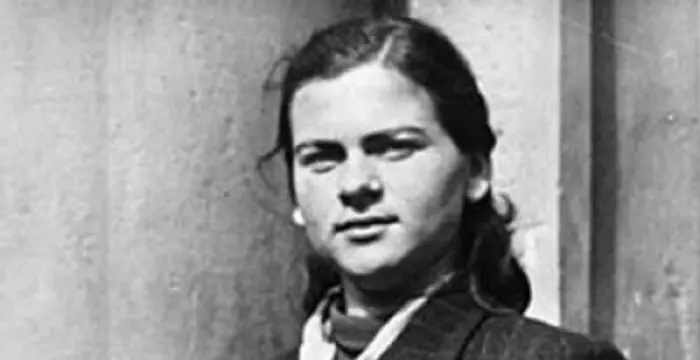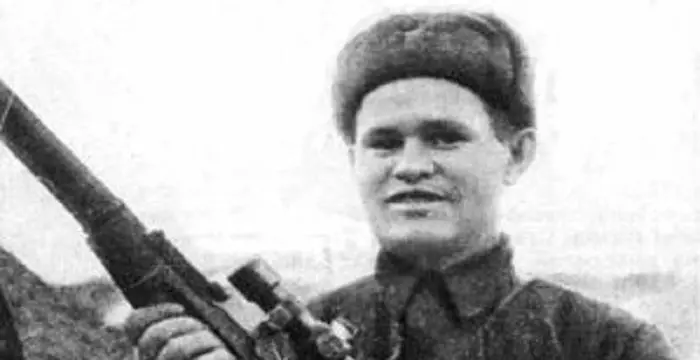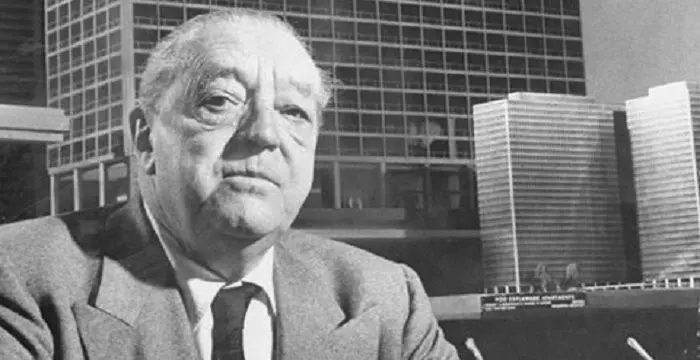
Ludwig Mies van der Rohe - Architects, Timeline and Family
Ludwig Mies van der Rohe's Personal Details
Ludwig Mies van der Rohe was a German-born American architect
| Information | Detail |
|---|---|
| Birthday | March 27, 1886 |
| Died on | August 17, 1969 |
| Nationality | German |
| Famous | Architects |
| Spouses | Ada Bruhn |
| Known as | Мис ван дер Роэ, Людвиг, 密斯·凡·德羅, 路德維希·密斯·凡德羅 |
| Founder / Co-Founder |
|
| Birth Place | Aachen, Kingdom of Prussia, German Empire |
| Gender | Male |
| Sun Sign | Aries |
| Born in | Aachen, Kingdom of Prussia, German Empire |
| Famous as | Architect |
| Died at Age | 83 |
// Famous Architects
Vitruvius
Vitruvius was a Roman architect, author, and military engineer during the 1st century BC. Check out this biography to know about his childhood, family life, achievements and fun facts about his life.
Rudolf Steiner
Rudolf Steiner introduced groundbreaking ideas in realms of spirituality, art, education and agriculture. Check out this biography to know about his childhood, family life, achievements and other facts related to his life.
Zaha Hadid
The famous Iraqi-British architect Zaha Hadid is known for her designs of the ‘Rosenthal Center for Contemporary Art’ and ‘Heydar Aliyev Center’. To know more about her childhood, profile, career and timeline read on.
Ludwig Mies van der Rohe's photo
Who is Ludwig Mies van der Rohe?
Ludwig Mies van der Rohe was a German-born American architect. He was commonly addressed as Mies. He is regarded as a pioneer of the modern architecture. His rectilinear forms, crafted in elegant simplicity, epitomized the international style of architecture. His designs exemplify his famous principle ‘less is more’ and demonstrate forthright use of the most modern materials, such as industrial steel and plate glass, his exceptional sense of proportion and his extreme concern for detail. He called his buildings ‘skin and bones’ architecture. He sought an objective approach that would guide the creative process of architectural design. He created a modern twentieth-century architectural style, adorned with clarity and simplicity. The spirit of modern era can be seen in his projects.
// Famous German peoples
Jordan Carver
Jordan Carver is a famous German model. Let’s take a close look at her personal life, including her age, career, net worth, achievements and some fun facts.
Jürgen Klopp
Jürgen Klopp is a German football manager, and a former professional football player. Check out this biography to know more about his childhood, family, personal life, etc.
Irma Grese
Irma Grese was a notorious German Nazi concentration camp guard during the Second World War. This biography profiles her childhood, life, horrifying acts, death and other facts.
Childhood & Early Life
Ludwig Mies van der Rohe was born on 27th March, 1886, in Aachen, Germany. He helped his father, who was a master mason and owned a small stonecutter’s shop. Mies never received any formal architectural training.
At 15, he apprenticed under several Aachen architects where he sketched outlines of architectural designs. This practice developed his skill for linear drawings, which he would use to produce some of the finest architectural designs.
At 19, he joined as an apprentice to Bruno Paul, a leading furniture designer.
His first project was a traditional suburban house. Its perfect execution impressed Peter Behrens, then Germany’s most progressive architect. He offered the 21-year-old Mies a job in his office.
He became member of the ‘Deutscher Werkbund’, an English-German Association of Craftsmen. Here he established ties with likeminded artists and craftsmen. The Werkbund’s members’ vision of new design tradition of using machine-made things, including machine-made buildings, gave birth to a ‘Gesamtkultur’. These ideas soon culminated in the so-called International Style of modern architecture.His thought process was influenced by Behrens, Hendrik Petrus Berlage, a pioneer of modern Dutch architecture and German architect Karl Friedrich Schinkel.
Career
During World War I, Mies was enlisted and looked after the construction of bridges and roads in the Balkans.
He returned to Berlin in 1918, joined several modernist architectural groups and organized many exhibitions. But he did not have any projects in hand. His only building of this period was a memorial of murdered communist leaders Karl Liebknecht and Rosa Luxemburg, dedicated in 1926, which was demolished by the Nazis.
His most important work of these years remained on paper. In fact, these theoretical projects turned in a series of drawings and sketches that are now in the ‘New York Museum of Modern Art’, foretell the entire range of his later work.
‘The Friedrichstrasse Office Building’ built in 1919, was one of the first proposals for an all steel-and-glass building.
‘The Glass Skyscraper’ (1921) applied his idea of a glass skyscraper whose transparent facade reveals the building’s underlying steel structure. Other theoretical studies explored the potential of concrete and brick construction.
He planned the first postwar ‘Werkbund exposition’ of housing demonstration projects at Weissenhoft in 1927. Europe’s 16 leading modernist architects, including Le Corbusier and Mies himself, designed various houses and apartment buildings, 33 units in all for the exposition.
This exposition demonstrated how the various architectural factions of the early postwar years had now merged into a single movement and how the International Style was born. Though not a popular success, the exposition was a critical one, and Europe’s elite suddenly began to commission modern villas, such as Mies’s Tugendhat House (1930) at Brno, Czech.
In 1930 Mies was appointed director of the Bauhaus, the avant-garde school of the arts. The focus of Bauhaus was to invent new forms of expressions in architecture, painting and sculpture. When he joined, the school had moved from Weimar to Dessau in 1925. He soon won respect as a stern but superb teacher. Between Nazi attacks from outside and left-wing student revolts from within, the school was in a state of perpetual turmoil. He tried to run the school in Berlin. However, he closed the school late in 1933 before the Nazis could close it.
Four years later, in 1937, Mies moved to the United States and joined as director of the ‘School of Architecture at Chicago’s Armor Institute’ (later the Illinois Institute of Technology). He served as the school’s director for the next 20 years. By the time he retired in 1958, the school had become world-renowned for its disciplined teaching methods as well as for its campus which he had designed in 1939–41. A cubic simplicity of campus buildings could easily be adapted to the diversified demands of the school.
After WWII, he turned his dream design of steel skeletons sheathed in glass curtain wall façades, into real life large scale projects of many high rise buildings. Among these major projects are the ‘Promontory Apartments’ (1949), the ‘Lake Shore Drive Apartments’ (1949–51) both in Chicago, and the ‘Seagram Building’ (1956–58) in New York City, a skyscraper office building with a glass, bronze, and marble exterior that Mies designed with Philip Johnson.
Also during this period, he applied his modernist aesthetic to three more-intimate structures, the ‘Farnsworth House’ in Plano, Ill. (completed 1951), the ‘Robert McCormick House’ in Elmhurst, Ill. (completed 1952; now part of the Elmhurst Art Museum), and the ‘Morris Greenwald House’ in Weston (completed 1955).
In the 1960s he continued to create beautiful buildings, and the prominent among them are ‘the Bacardi Building’ in Mexico City (1961), ‘Charles Center office building’ in Baltimore (1963), ‘the Federal Center’ in Chicago (1964), ‘the Public Library’ in Washington, D.C. (1967); and, ‘the Gallery of the Twentieth Century’ (later called the New National Gallery) in Berlin, dedicated in 1968. ‘The IBM Building’ (1972), in Chicago, was completed after his death.
Major Works
He created his footprint in the architectural world through design of ‘Friedrichstrasse Office Building’. Although it was never built, Mies's design remains one of the most important structures in 20th century architecture. It established the Miesian principle of ‘skin and bones’ construction: a skyscraper made entirely of glass and steel. For the Friedrichstrasse architecture competition, Mies ignored several rules dictated in the guidelines and presented a radical concept to the committee. The design didn't win; much less receive an official mention. However, decades later, this style has come to dominate corporate architecture.
His most famous executed project of the interwar period was the German Pavilion (also known as the Barcelona Pavilion), which was commissioned by the German government for the ‘1929 International Exposition’ at Barcelona (demolished 1930; reconstructed 1986). It exhibited a sequence of marvelous spaces on a 175- by 56-foot travertine platform, partly under a thin roof, and partly outdoors, supported by chromed steel columns. The spaces were defined by walls of honey-coloured onyx, green Tinian marble, and frosted glass and contained nothing but a pool, in which stood a nude sculptural, and a few of the chairs he had designed for the pavilion. These cantilevered steel chairs, which are known as Barcelona chairs, became an instant classic of 20th-century furniture design.
Awards & Achievements
In 1959, Mies received the ‘Royal Gold Medal’ by the ‘Royal Institute of British Architects’.
‘The American Institute of Architects’ conferred the ‘AIA Gold Medal’ upon him in 1960. The same institute honored him thrice (in 1976, 81 and 84) with ‘The Twenty-five Year Award’ for his buildings and structures that have ‘stood the test of time for 25 to 35 years’, and that exemplify design of enduring significance.
He was bestowed with ‘Presidential Medal of Freedom’ by the US President in 1963.
Personal Life & Legacy
In 1913, Mies married Ada Bruhn who was the daughter of a wealthy industrialist. The couple eventually had three daughters and separated in 1918.
During his military service in 1917, he fathered a son outside his marriage.
In 1925, he began a relationship with designer Lilly Reich that ended when he moved to the United States.
From 1940 until his death, artist Lora Marx was his primary companion. He also carried on a romantic relationship with sculptor and art collector Mary Callery.
He suffered from cancer of the esophagus. In 1969, he was diagnosed with pneumonia as well. Two weeks later on 19th August, 1969, he died in Chicago.
Trivia
Mies added his mother’s surname, ‘van der Rohe’, after establishing himself as an architect.
// Famous Aries Celebrities peoples
Skai Jackson
Skai Jackson is an American child actress with huge fan following. Find more about her family & personal life, relationships, facts and more.
Shemar Moore
Shemar Moore is a model turned actor best known for his role in the television series ‘The Young and the Restless’. This biography of Shemar Moore provides detailed information about his childhood, life, achievements, works & timeline.
Vasily Zaytsev
Vasily Zatysev was a Russian sniper who served during the World War II. Check out this biography to know about his childhood, family life, achievements and fun facts about him.
Ludwig Mies van der Rohe biography timelines
- // 27th Mar 1886Ludwig Mies van der Rohe was born on 27th March, 1886, in Aachen, Germany. He helped his father, who was a master mason and owned a small stonecutter’s shop. Mies never received any formal architectural training.
- // 1913 To 1918In 1913, Mies married Ada Bruhn who was the daughter of a wealthy industrialist. The couple eventually had three daughters and separated in 1918.
- // 1917During his military service in 1917, he fathered a son outside his marriage.
- // 1918 To 1926He returned to Berlin in 1918, joined several modernist architectural groups and organized many exhibitions. But he did not have any projects in hand. His only building of this period was a memorial of murdered communist leaders Karl Liebknecht and Rosa Luxemburg, dedicated in 1926, which was demolished by the Nazis.
- // 1919‘The Friedrichstrasse Office Building’ built in 1919, was one of the first proposals for an all steel-and-glass building.
- // 1921‘The Glass Skyscraper’ (1921) applied his idea of a glass skyscraper whose transparent facade reveals the building’s underlying steel structure. Other theoretical studies explored the potential of concrete and brick construction.
- // 1925In 1925, he began a relationship with designer Lilly Reich that ended when he moved to the United States.
- // 1927He planned the first postwar ‘Werkbund exposition’ of housing demonstration projects at Weissenhoft in 1927. Europe’s 16 leading modernist architects, including Le Corbusier and Mies himself, designed various houses and apartment buildings, 33 units in all for the exposition.
- // 1930This exposition demonstrated how the various architectural factions of the early postwar years had now merged into a single movement and how the International Style was born. Though not a popular success, the exposition was a critical one, and Europe’s elite suddenly began to commission modern villas, such as Mies’s Tugendhat House (1930) at Brno, Czech.
- // 1940From 1940 until his death, artist Lora Marx was his primary companion. He also carried on a romantic relationship with sculptor and art collector Mary Callery.
- // 1959In 1959, Mies received the ‘Royal Gold Medal’ by the ‘Royal Institute of British Architects’.
- // 1960 To 1976‘The American Institute of Architects’ conferred the ‘AIA Gold Medal’ upon him in 1960. The same institute honored him thrice (in 1976, 81 and 84) with ‘The Twenty-five Year Award’ for his buildings and structures that have ‘stood the test of time for 25 to 35 years’, and that exemplify design of enduring significance.
- // 1963He was bestowed with ‘Presidential Medal of Freedom’ by the US President in 1963.
- // 19th Aug 1969He suffered from cancer of the esophagus. In 1969, he was diagnosed with pneumonia as well. Two weeks later on 19th August, 1969, he died in Chicago.
Ludwig Mies van der Rohe's FAQ
What is Ludwig Mies van der Rohe birthday?
Ludwig Mies van der Rohe was born at 1886-03-27
When was Ludwig Mies van der Rohe died?
Ludwig Mies van der Rohe was died at 1969-08-17
Where was Ludwig Mies van der Rohe died?
Ludwig Mies van der Rohe was died in Chicago, US
Which age was Ludwig Mies van der Rohe died?
Ludwig Mies van der Rohe was died at age 83
Where is Ludwig Mies van der Rohe's birth place?
Ludwig Mies van der Rohe was born in Aachen, Kingdom of Prussia, German Empire
What is Ludwig Mies van der Rohe nationalities?
Ludwig Mies van der Rohe's nationalities is German
Who is Ludwig Mies van der Rohe spouses?
Ludwig Mies van der Rohe's spouses is Ada Bruhn
Which company or organization was founded by Ludwig Mies van der Rohe?
Ludwig Mies van der Rohe was the founder/co-founder of Illinois Institute of Technology
What is Ludwig Mies van der Rohe's sun sign?
Ludwig Mies van der Rohe is Aries
How famous is Ludwig Mies van der Rohe?
Ludwig Mies van der Rohe is famouse as Architect
